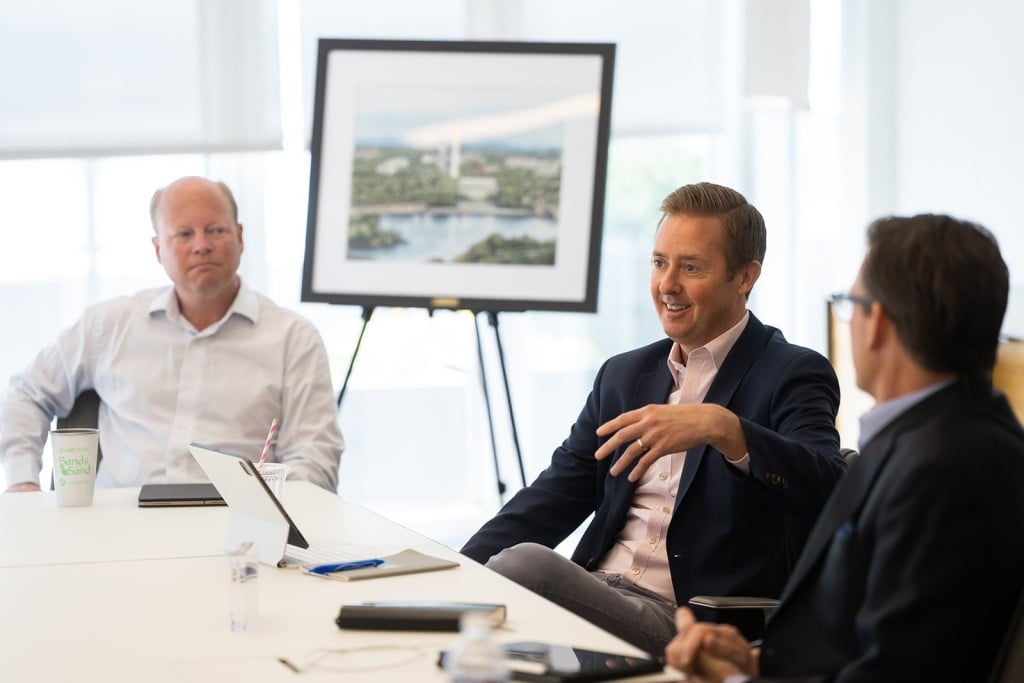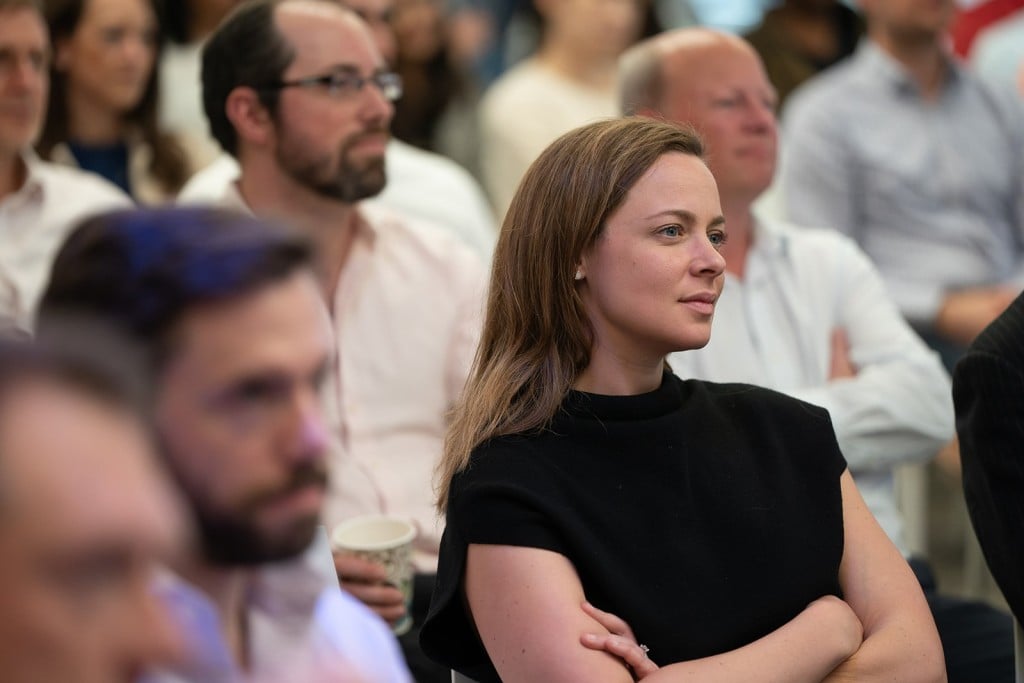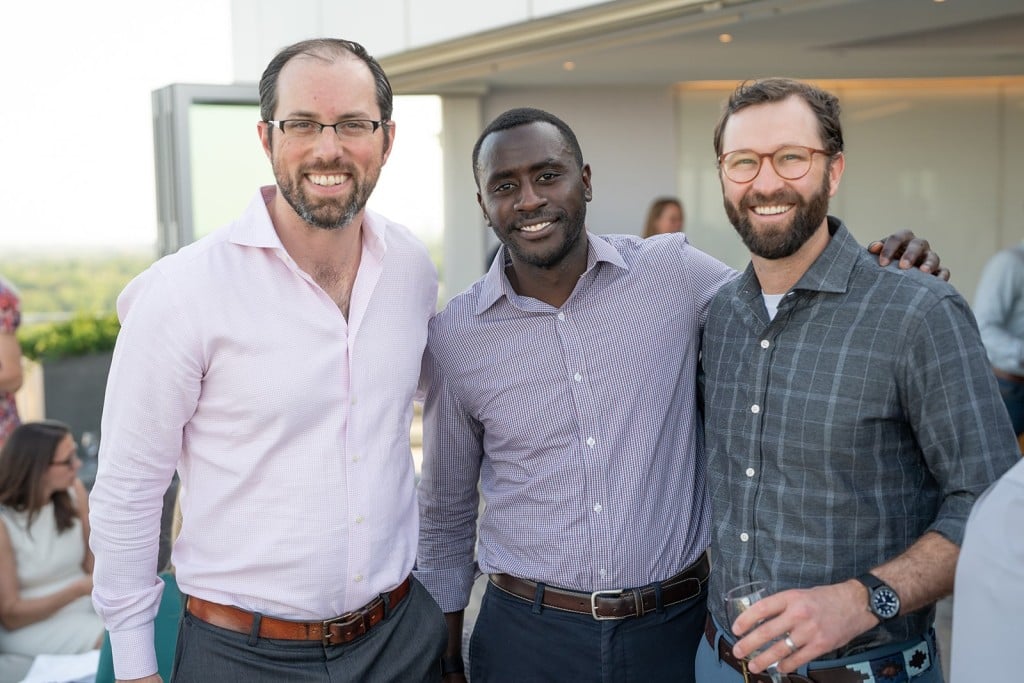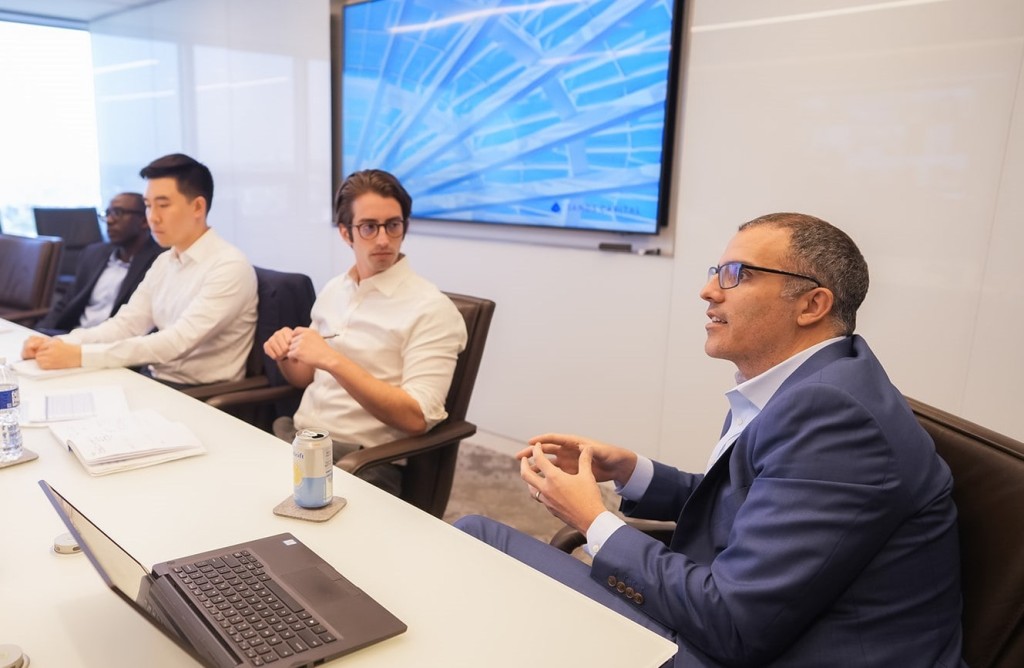Related Articles
As we continue to emerge from one of the most difficult periods in modern history, we are encouraged by the results of our investment strategies, which logged solid absolute investment results for 2023. Most also outperformed their respective benchmarks. We delivered in 2023 by sticking with our time-tested investment strategy, following our process, doing our research, and executing.
Key Points
- Our ability to create value for our clients is not in anticipating the day-to-day and quarter-to-quarter price moves but in predicting the direction and magnitude of the possibilities.
- Earnings growth was the primary driver for the stock price appreciation of our businesses. Many of our financially solid portfolio companies were able to widen their competitive moats as less-financially stable businesses buckled. They were also able to make operational choices that bolstered their unit economics.
- The valuations of many of our businesses were lower at the end of the year than the beginning—an indication that markets underappreciated their improvements in fundamentals.

In volatile times, we often hear people say, “It’s different this time.” But it’s never really different.
Society is always cycling through periods of deterioration and renewal. These cycles happen across sectors, geographies, and cultures, sometimes simultaneously, which can create disruptive shifts. About four years ago, when the coronavirus pandemic emerged, we began to experience such a shift. It changed life as we knew it.
While the causes of this and other dramatic disruptions vary, their effect on financial markets is predictable. Crisis, panic, conflict, shifts in macroeconomics, and a barrage of headlines from myriad news sources cause markets to shorten their focus and seize with fear.
It is during such periods that active managers can position for long-term success. When we lengthen our time horizon, the effects of the near-term sentiment tend to wash out, and we are left to focus on the potential earnings growth of our portfolio businesses. Our ability to create value for our clients is not in anticipating the day-to-day and quarter-to-quarter price moves but in predicting the direction and magnitude of the possibilities. Throughout our 30-year-plus history, this is what has—and will always—matter to us as long-term business owners.
As we continue to emerge from this difficult period, we are encouraged by the results of our investment strategies, which logged solid absolute investment results for 2023. Most also outperformed their respective benchmarks.
Long-term Opportunities in a Short-sighted Market
As we so often find during periods of disruption, the markets and media focus on short-term dynamics. Last year, the Federal Reserve pivot and loosening financial conditions drove much of that volatility. But when the dust cleared, we once again found that the business fundamentals ultimately drove stock performance. Thus, our long-term strategy served us well. We dug in, focused on business fundamentals, and continued to own what we believed would be the best-advantaged business models over the long term, based on our extensive, proprietary research.
We also stayed close to management teams as they readjusted their business to achieve better cash flow efficiencies and sustainable growth without losing their value-adding offerings to customers. We sold a few businesses, but, more often, we increased at lower prices our investments in businesses we already owned in client portfolios. This was a critical period of adjustment that many investors seemed to overlook. In 2022, we saw business fundamentals start to improve. Then, during 2023, most of the stock prices of the businesses we owned began to reflect these improvements, in many cases, substantially and in short periods.
As easy money dried up, many of our businesses, with solid fundamentals, were able to widen their competitive moats as less-financially stable businesses buckled. They were also able to take advantage of their solid financial positions to make operational choices that bolstered their unit economics.
At Sands Capital, we have a saying that “you must be there, not be getting there.” In other words, active investors need to own the right businesses for their clients when the fundamentals and potential of these businesses are strong but before their stock prices rise.
Our ability to create value for our clients is not in anticipating the day-to-day and quarter-to-quarter price moves but in predicting the direction and magnitude of the possibilities.
This dichotomy can be seen in the decomposition of 2023’s investment results for all strategies, which shows that earnings growth was the primary driver for the stock price appreciation of our businesses. In aggregate, our businesses actually experienced multiple compression.
In the exhibits below, we use the results of our strategy with the longest track record, Select Growth, to illustrate this trend. Multiple expansion, on the other hand, drove at least half of the gains of the indexes. Our conclusion: The business fundamentals of our companies are sound and likely better than those of the benchmarks or the average company. This is active management at work.
We knew the tides would turn and that markets would eventually refocus on business fundamentals and the attractive growth prospects of the businesses we own. We did not know exactly when this would happen. We never do. But, in listening to the rhythm of history, we knew it was a high probability. It’s never really different.
Exhibit 1
Improving Fundamentals Are Driving Recent Investment Results
Select Growth vs. Russell 1000 Growth Index 2023 Return Decomposition
Our Vision of the Future Has Not Changed
A solid finish to a rocky year served as a reminder of how important it is to stay true to our investment philosophy, not be distracted by sentiment shifts, and stay focused on the long-term potential of our businesses. The key for active managers is to emphasize the difference between short-term market moves and long-term value creation. By focusing on the long term, we are able to take advantage of value created by market misconceptions.
In Exhibit 2, we see that one-year investment results can be very volatile, because nonfundamental factors often drive stock prices in the short term. Ten-year rolling investment results are much smoother because the longer time period dampens the influence of valuations and sentiment.
Over time, we’ve observed that both for the market—and for our portfolios—earnings power and growth dictate the value and stock prices of businesses (see Exhibit 3). By focusing on distinct periods, however, investors can miss the big picture, which is the opportunity created by compounding returns.
Dexcom, Adyen, and Block are examples of businesses whose stocks were caught in the irrational selling that characterized the third quarter, only to experience strong rebounds in the fourth quarter. In each case, the market reacted harshly to news that we viewed as overly punitive and ultimately incorrect or incomplete.
Exhibit 2
We Accept Short-term Volatility for Potential Long-term Wealth Creation
Select Growth Rolling and Cumulative Investment Results 2/28/92 to 12/31/23
Dexcom’s rout was perhaps the most publicized as investors reacted to a fear that increasing adoption of a new class of drugs (GLP-1) used to reduce blood sugar and assist in weight loss would shrink the population of people with Type 2 diabetes who would use continuous glucose monitors (CGMs.) This fear, however, stood in contrast to our years of research. Our view was that increased GLP-1 adoption would not significantly reduce the number of people with Type 2 diabetes and could actually be a long-term positive for CGM growth, because GLP-1s and CGMs are more complementary than competitive. By the end of the year, Dexcom recovered as additional data confirmed our thesis, and the company posted strong business results marked by accelerating growth and record patient adds and cash flows. We continue to believe that CGM adoption is just in its early stages with a long runway for growth in the meaningfully underpenetrated diabetes population.
Markets jumped to similar negative conclusions about Block and Adyen, which sent their stocks drastically lower in the third quarter before recovering in the fourth. In the case of Block, markets battered the stock as an obsession over near-term cyclical headwinds spun into a narrative of structurally impaired growth, competitive moat, and profitability. Adyen faced similar pressure when investors interpreted an unexpected deterioration in U.S. volumes as a sign of broad-based commoditization rather than the temporary and isolated adjustment it ultimately proved to be. In both cases, the stocks reversed course in the fourth quarter after the companies reported strong results and gave multiyear growth and profitability guidance that exceeded expectations and helped dispel bearish forecasts of continued deterioration. Block provided investors with added visibility into the durability of its long-term investment case by sharing concrete insights about its finances, product traction, and go-to-market plans. Adyen also took strides to restore market confidence by committing to more frequent business updates and insights into its growth trajectory.
Exhibit 3
We Believe Earnings Growth Will Lead Market Cap Higher Over Time
Sands Capital Flagship Public Equity Strategies as of 12/31/23
Shopify’s story spanned much of 2023. Heading into the year, sentiment was weak, as investors hyper-focused on consumer spending, the health of Shopify’s merchant base, ongoing investments in logistics, and increasing competition from Amazon. Late in 2022, we conducted extensive research on Shopify and the direct-to-consumer ecommerce market more broadly. Based on discussions with more than 20 Shopify merchants, direct-to-consumer experts, digital advertisers, and fulfillment experts, we strengthened our conviction in Shopify’s long-term potential and determined that the market concerns were largely overblown.
We concluded that the market was overlooking the increasing strength in Shopify’s core business, including accelerating share gains in the enterprise, a strong slate of new products, and the potential for significant margin expansion. Although we did not agree with Shopify’s logistics investment, we did not think it was enough to derail our investment case and saw a self-help opportunity for management to better detail the magnitude and expected returns of the investment or to exit altogether. Many of our expectations materialized in 2023. Gross merchandise volume and revenue growth accelerated, and operating margins improved over the course of 2023, translating to attractive results.
We are well aware that not all of our investments experienced these kinds of significant selloffs or rebounds. But we highlight the above businesses to illustrate how indiscriminate markets can be once panic sets in and how critical patience and conviction are in riding out these waves.
As an active manager, we are encouraged that after the passage of time, the markets refocused, and in each of these cases our views on the fundamental health of the businesses and their increasing competitiveness were validated.
As we look five to 10 years into the future, what matters most is that many of our investment cases have been significantly enhanced and that the secular trends supporting them are immutable. Being able to maintain a patient long-term approach gave us the opportunity to own these businesses throughout the challenging environment and going forward we expect we will reap the benefits to varying degrees of our unwavering conviction.
Over time, however, these are businesses are creating or benefiting from technological advances, such as artificial intelligence (AI) and cloud computing. These are companies that enable better, faster, and cheaper access to commerce, financial services, and healthcare. Historically, these types of leading businesses have created the most value for shareholders, and we have no reason to believe that this has changed.
Active Management Still Works
As we head into 2024 there is much to be concerned about in the world. This has been true for our entire careers. Unfortunately, it will likely always be true. One thing that has changed is that many of the businesses we own are more reasonably priced than they were a few years ago. Furthermore, they are significantly more profitable, are self-sustaining, and continue to innovate and grow.
After one of the most challenging times ever for active management, we continue to believe active, concentrated investors, doing deep proprietary research are advantaged and should perform well.
We recognize that expectations are high for our portfolio companies. They have their work cut out to rise to those challenges. They must continue to adapt and evolve. We will continue to evaluate them with rigor and passion to determine that they are fundamentally strong, resilient in the face of the fast-changing environment, and that they maintain valuations that are attractive relative to their long-term growth prospects.
Disclosures:
The views expressed are the opinion of Sands Capital and are not intended as a forecast, a guarantee of future results, investment recommendations, or an offer to buy or sell any securities. The views expressed were current as of the date indicated and are subject to change. This material may contain forward-looking statements, which are subject to uncertainty and contingencies outside of Sands Capital’s control. All investments are subject to market risk, including the possible loss of principal. Readers should not place undue reliance upon these forward-looking statements. There is no guarantee that Sands Capital will meet its stated goals. Past performance is not indicative of future results. A company’s fundamentals or earnings growth is no guarantee that its share price will increase. Company logos and website images are used for illustrative purposes only and were obtained directly from the company websites. Company logos and website images are trademarks or registered trademarks of their respective owners and use of a logo does not imply any connection between Sands Capital and the company.
The businesses referenced in this article: Adyen, Block, Dexcom, and Shopify represent examples of portfolio companies that experienced some of the most extensive draw downs in the third quarter and recoveries in the fourth. We are showcasing these examples to illustrate the extreme volatility that typified the period, and which was not always driven by any “rational” or fundamental trigger for a selloff, such as an earnings warning or similar negative news event for the individual company.
As of December 31, 2023, Adyen, Dexcom and Block were holdings in Sands Capital strategies.
References to “we,” “us,” “our,” and “Sands Capital” refer collectively to Sands Capital Management, LLC, which provides investment advisory services with respect to Sands Capital’s public market investment strategies, and Sands Capital Ventures, LLC, which provides investment advisory services with respect to Sands Capital’s private market investment strategies, which are available only to qualified investors. As the context requires, the term “Sands Capital” may refer to such entities individually or collectively. As of October 1, 2021, Sands Capital was redefined to be the combination of Sands Capital Management, LLC and Sands Capital Ventures. Both firms are registered investment advisers with the United States Securities and Exchange Commission in accordance with the Investment Advisers Act of 1940. The two registered investment advisers are combined to be one firm and are doing business as Sands Capital. Sands Capital operates as a distinct business organization, retains discretion over the assets between the two registered investment advisers, and has autonomy over the total investment decision-making process.
Information contained herein may be based on, or derived from, information provided by third parties. The accuracy of such information has not been independently verified and cannot be guaranteed. The information in this document speaks as of the date of this document or such earlier date as set out herein or as the context may require and may be subject to updating, completion, revision, and amendment. There will be no obligation to update any of the information or correct any inaccuracies contained herein.
This material is for informational purposes only and does not constitute an offer, invitation, or recommendation to buy, sell, subscribe for, or issue any securities. The material is based on information that we consider correct, and any estimates, opinions, conclusions, or recommendations contained in this communication are reasonably held or made at the time of compilation. However, no warranty is made as to the accuracy or reliability of any estimates, opinions, conclusions, or recommendations. It should not be construed as investment, legal, or tax advice and may not be reproduced or distributed to any person.
In the United Kingdom, this communication is issued by Sands Capital Advisors – UK Ltd (“Sands UK”) and approved by Robert Quinn Advisory LLP, which is authorised and regulated by the UK Financial Conduct Authority (“FCA”). Sands UK is an Appointed Representative of Robert Quinn Advisory LLP. This material constitutes a financial promotion for the purposes of the Financial Services and Markets Act 2000 (the “Act”) and the handbook of rules and guidance issued from time to time by the FCA (the “FCA Rules”). This material is for information purposes only and does not constitute an offer to subscribe for or purchase of any financial instrument. Sands UK neither provides investment advice to, nor receives and transmits orders from, persons to whom this material is communicated, nor does it carry on any other activities with or for such persons that constitute “MiFID or equivalent third country business” for the purposes of the FCA Rules. All information provided is not warranted as to completeness or accuracy and is subject to change without notice. This communication and any investment or service to which this material may relate is exclusively intended for persons who are Professional Clients or Eligible Counterparties for the purposes of the FCA Rules and other persons should not act or rely on it. This communication is not intended for use by any person or entity in any jurisdiction or country where such distribution or use would be contrary to local law or regulation.
RO#3366764












